IMAGING SYSTEMS
SMC - Spacecraft Monitoring Camera
The HERA Spacecraft Monitoring Camera (SMC) is a very compact (~1U and 900g including optical system) and high-performance CMOS Camera, specifically designed by TSD for deep space applications, in the context of the ESA HERA mission. It features a 4MP image sensor with a selectable ROI between 1600x1600px and 1600x1200px, which operates at up to 10 fps in the visible range, from 400 to 750 nm, with B/W and RGB versions also available. The system offers real-time image processing capabilities, achieving a total pixel rate of up to 40Mpx/s. The camera is equipped with 2x32Gbit NAND Flash devices (nominal + redundant), along with a rad-tolerant Microchip ACTEL ProAsic3 FPGA, which can achieve compression factors in the range 4÷100, while requiring very low power <5W @28VDC.
Being a deep-space camera, the whole electronics is based on components radiation tolerant to a TID >20Krads; in addition to this, specific HW and FW mitigations, such as SEL protection for image sensor and SEU/SEFI prevention for memories, allow the camera to be resistant to a SEE value of at least 30 MeV/mg/cm2.
The SMC has been successfully launched aboard the HERA Spacecraft in October 2024.
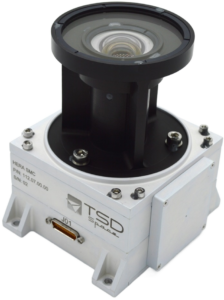
H2CS-3 Highly Compact and High Performance Camera System for CubeSat
H2CS-3 is a much more compact, lower power and lower mass version of the H2CS-3 camera. Its architecture is specifically designed to minimize the number of components and thus size, mass, power and to offer a good reliability, thanks also to a carefully selection of the, targeting the needs of the emerging small satellites market, especially in term of cost-competitiveness. The H2CS-3 architecture offers lower processing resources w.r.t. the H2CS-3 ones, but the camera is fully autonomous, allowing the implementation of a whole set of functionalities specific for imaging purposes, including an embedded processing capability for the implementation of image processing algorithms.
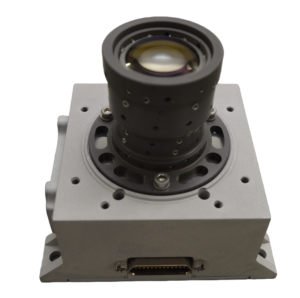
H2CS-2 Highly Compact and High Performance Camera System for CubeSat
The H2CS-2 is a highly integrated and reliable camera system, designed by TSD for applications requiring remarkable processing capability embedded into the camera.
Thanks to a very innovative and unique architecture and to the adoption of last generation high density FPGAs, the H2CS-2 is able to offer a complete set of functionalities for imaging applications, including a remarkable embedded processing capability, for the implementation of processing algorithms.
A TSD proprietary design allows the focal plane to be thermo-mechanically decoupled from the rest of the structure, thus guaranteeing a very stable positioning of the FPA with respect to the overall camera assembly.
With a total power consumption of only 2.5 W, a total mass of 335 gr and a very small volume of 73mm x 73mm x 41.5mm, H2CS-2 has been conceived as a reliable and low cost product, to support imaging applications for very small satellites, such as micro- and nano-satellites. Applications requiring real-time image acquisition and processing can be carried out by using the camera system only, without requiring an external processing unit.
The camera is provided with a 4Mpixel image sensor and it is able to acquire images data with a throughput up to 80Mpixel/s at 12bit/pixel. A complete set of data interfaces, comprised of CAN, SpaceWire working up to 100Mbit/s and Camera/Channel Link up to 960Mbit/s, enables the transferring of different datasets, like navigation data to the GN&C on-board computer, compressed or uncompressed images and housekeeping data to the OBDH, by using the typical standard I/F available on board the spacecraft.
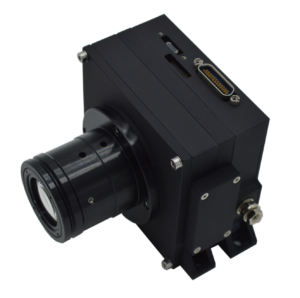
H2CS-1 Highly Compact and High Performance Camera System for CubeSat
The H2CS is a highly compact and high performance camera system, specifically designed for CubeSat and more in general for very small Spacecraft Platforms. The Camera System is composed of a primary Camera with a ±2.05° (diagonal) NFOV (Narrow Field Of View) and motorized lens, so to provide autofocus capability, and a secondary Camera with a ±32.5° (diagonal) WFOV (Wide Field Of View). Both cameras can be equipped with a 12Mpixel B/W or color CMOS image sensor and share a common main electronics.
The System offers real time image processing capability and includes also a non-volatile 64Gbit mass memory for raw and processed image data storage. Key features of the camera system are the low mass/low volume and a remarkable 48Mpixel/s image data throughput, despite of the very low power consumption <7[W] @5VDC, that includes also the actuation of the motor for the focusing.
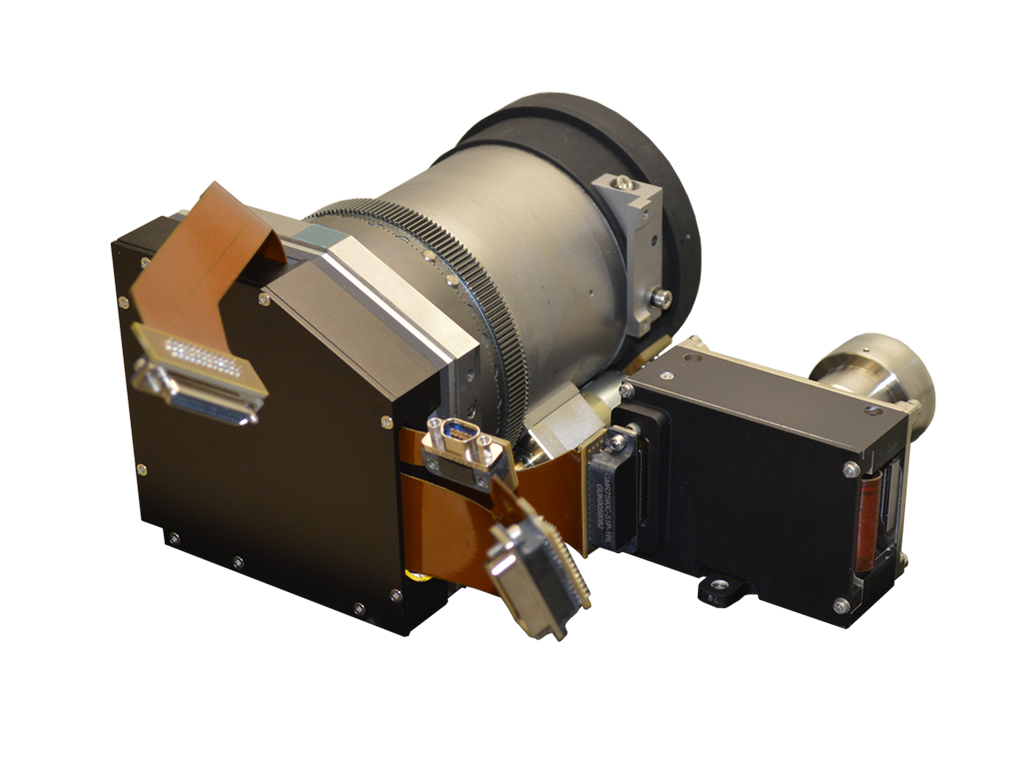
A Compact and High Performance Camera for Small Earth Observation Satellites
In the framework of an ESA Technology development program, primed by Media Lario Technologies s.r.l., TSD developed a very innovative, compact, low power and high performance Focal Plane Assembly (FPA) and Camera Electronics for a mid-to-high resolution multispectral optical payload.
The payload, named STREEGO, is characterized by a compact envelope (320 x 600 x 600 mm3), reduced mass (<20Kg.), and competitive cost. The optical design is based on a Three Mirror Anastigmatic (TMA) configuration, which adopts a 12Mpixel large two-dimensional CMOS sensor, in order to provide, at a nominal altitude of 600 km, a Swath of 11.3 Km, a Ground Sampling Distance (GSD) of 2.75 m for panchromatic images and 5.5 m for multispectral images. The original design solution allows the integration of all the electronics directly on the Telescope structure, thus avoiding the need of external electronic units and minimizing the overall Payload volume and mass. The available data throughput is 157.97Mpixel/s at 10bit/pixel and 131.51Mpixel/s at 12bit/pixel.
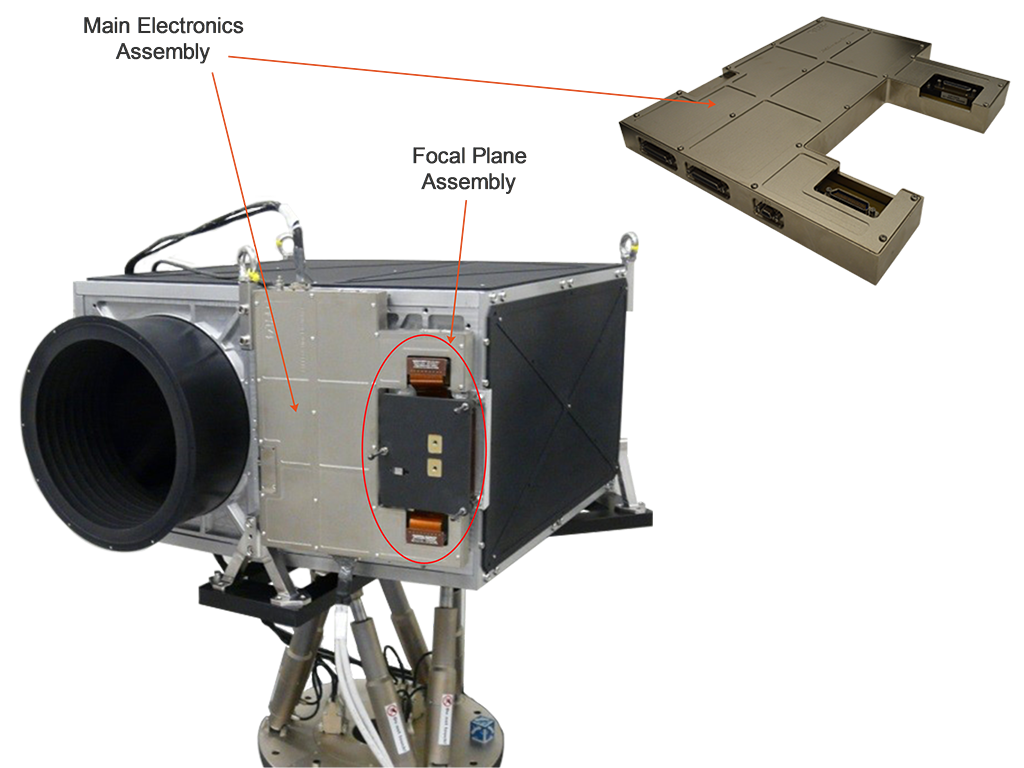
Multi-Ocular Smart Systems (MOSS)
Vision-based navigation can be considered as a major enabling navigation technology in support of several space applications, such as lander and rover autonomous navigation for deep space exploration, precise Rendezvous and Docking for On-Orbit Servicing and high accuracy relative navigation for spacecraft Formation-Flying.
In this context, MOSS (Multi-Ocular Smart System) has been developed with the aim of providing real time processing capabilities, significantly higher than the ones of similar systems currently available. The system is characterized by low mass and low power consumption, thus being also compatible with small space platforms.
MOSS comprises four different items: a trinocular camera, two monocular cameras and a High-performance Processing unit for Visual-based Navigation (HPVN). Capable of supporting up to four HD video inputs, with an overall 240Mpixel/s video data input throughput, the HPVN performs a number of (hardware accelerated) image processing algorithms: loss-less and/or lossy compression, feature detection and tracking and real-time disparity map calculation.

DVS for ISS Scientific Payloads
The Digital Video System (DVS), based on an evolution of TSD’s H2VMU platform, was specifically designed for Scientific Payloads on board the International Space Station (ISS). It represents a mature, robust and effective solution offering to the ISS users a very wide range of possibilities, in terms of video resolution & frame rate and real-time image/processing compression, and it is able to fulfill the increasingly demanding requirements of the image diagnostics.
The DVS provides real-time video acquisition, high compression using advanced Wavelet algorithms, storage and transmission of a continuous flow of video with different characteristics in terms of image dimensions and frame rates. The DVS is able to operate with the latest generation of high-performances cameras acquiring high resolution video images up to 4Mpixels@60 fps or high frame rate video images up to about 1000 fps@512x512pixels.
The DVS has been adopted by the EML (ElectroMagnetic Levitator) facility that is accommodated in ESA’s EDR in the European Columbus Laboratory on board the ISS since August 2014.
The EML is a jointly ESA and DLR program, primed by AIRBUS, able to provide containerless melting and solidification of electrically conductive, spherical samples, under ultra-high vacuum and/or high purity gas conditions.
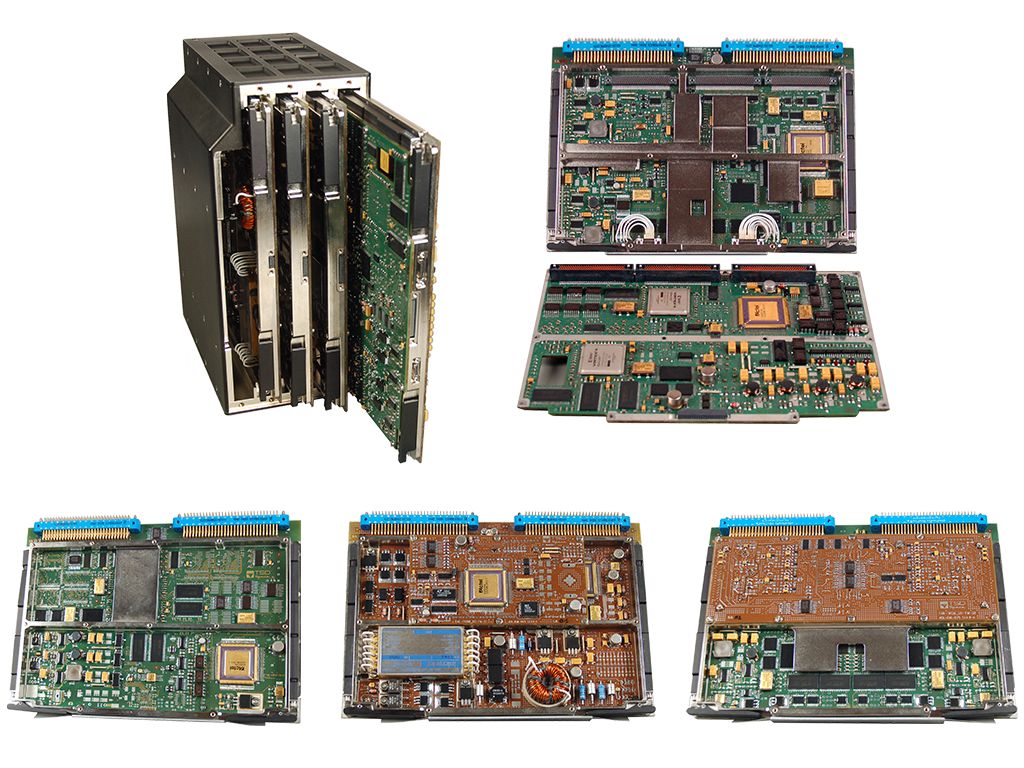
Camera System for Small Space Platform (PRISMA)
In the framework of the PRISMA R&D program, funded by the Swedish National Space Board (SNSB) and primed by the Swedish Space Corporation (SSC), TSD developed a camera system for small space platform, able to offer 4Mpixel resolution real time color video image acquisition, compression, storage and encoding.
The PRISMA mission was primarly a RVD and Formation Flying technology test bed. It consisted of 2 spacecrafts – named Mango (Main spacecraft) and Tango (Target Spacecraft) – orbiting in LEO sun-synchronous orbit at around 600-1000 km.
The Camera system, based on a high-resolution optical unit and a video management unit – named H2VMU (High Resolution/High Frame Rate Video Management Unit) – was located on-board the Main Spacecraft and aimed at acquiring video sequences of the target spacecraft, mainly during in-orbit maneuvers, and also Earth images.
Two spacecrafts, launched on June 15, 2010, were nominally operated till August 2014, when a malfunction in the propulsion system caused the end of the mission. During the 4+ years of mission, the TSD’s Camera System collected and made available on Ground a huge number of images, thus allowing the verification of the AOCS and GNC performance and the overall system status.
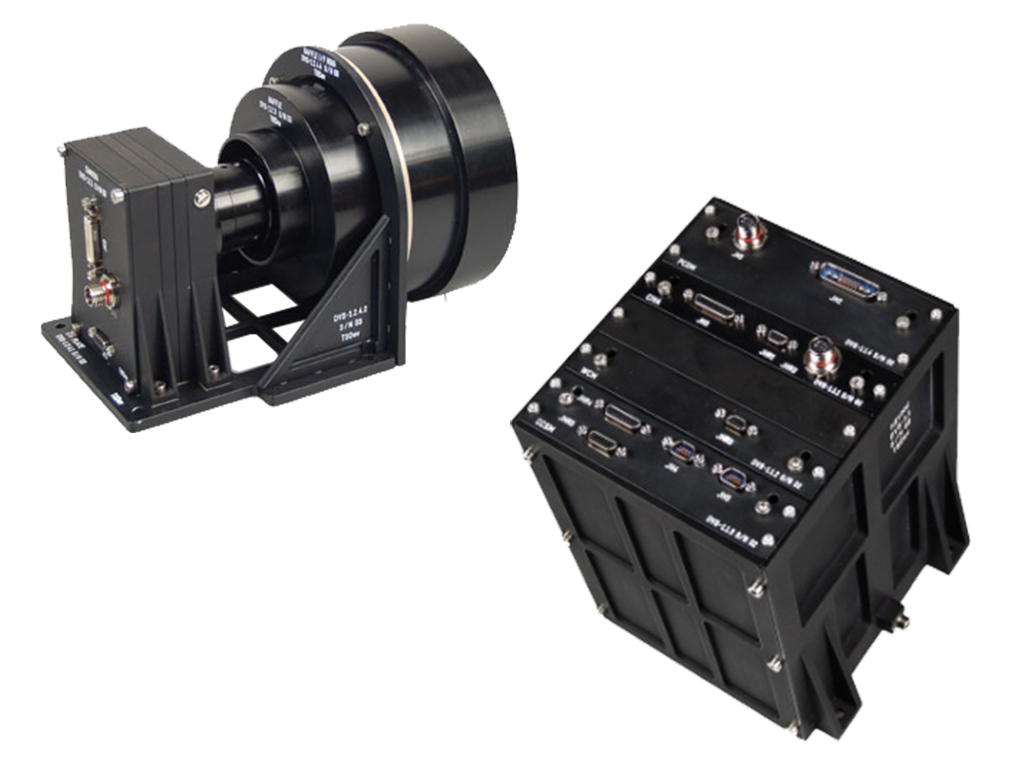
ERB-2
The Erasmus Recording Binocular 2 (ERB-2) is a digital stereoscopic camera allowing the simulation of human binocular vision. The ERB-2, primed by Cosine and funded by ESA-ESTEC, was a technology experiment flown on board the ISS able to capture and send to ground 3D films and related audio of the scenes seen by the camera itself. TSD developed the camera Flight Electronics and the Ground Segment.
The ERB-2 was launched on February 2010 and the first tests were successfully performed in July and August 2010. On March 2011 the Astronaut Paolo Nespoli conducted a fly-through filming program, starting in Kibo JPM (JEM Pressurized Module) and proceeding through Node-2, US Lab, Node-3 with Cupola to COLUMBUS Laboratory.

DVS for Sounding Rocket Experiment Modules
The Digital Video System (DVS) is based on a distributed architecture specifically designed to support microgravity experiment modules on board Sounding Rockets, providing video acquisition, compression, on board storage and video data transmission to Ground.
The DVS is a system that comprises both flight and ground equipment. Core of the DVS is the flight unit named High resolution/High frame rate Video Management Unit (H2VMU), that, starting from 2005 (maiden fight on board MASER 10 ) and with continuous enhancement/customization, has been employed for a significant number of missions.
The H’VMU is based on a modular architecture comprising compact and low power modules, each of them implementing a set of specific functions. The specific requirements of an Experimental Module can be satisfied by putting together a proper number and type of modules.

